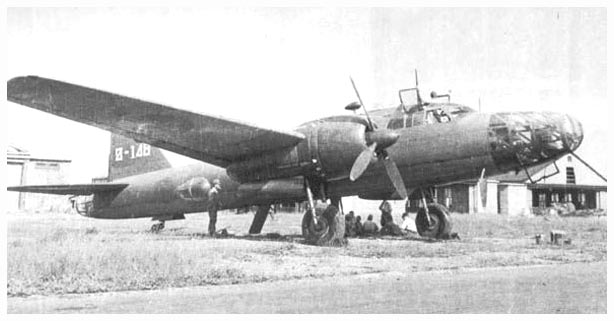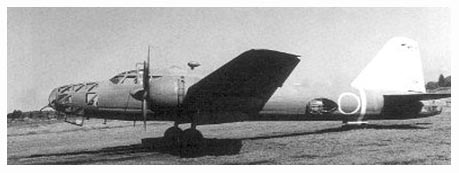WARBIRDS RESOURCE GROUP > IJARC > BOMBERS > PREVIOUS PAGE
"Flying Dragon"

|
Type: Heavy Bomber, Heavy Escort Fighter Origin: Mitsubishi Crew: Six/Eight Allied Code Name: Peggy Models: Ki-67-Ia, Ib and Ki-67-II, and Ki-109 First Flight: Early 1943, Ki-109: August 1944 Service Delivery: April 1944 Final Delivery: N/A Production: 698 Mitsubishi: 606 Kawasaki: 91 Army Air Arsenal at Tachikawa: 1 Powerplant: Model: Mitsubishi Ha-104 Type: 18-cylinder two-row radial engine Number: Two Horsepower: 1,900 hp Dimensions: Wing Span: 73 ft. 9.75 in. (14.55m) Length: 61 ft. 4.25 in. (18.7m) Height: 18 ft. 4.5 in. (5.60m) Wing Area: 708.83 sq. ft. (65.85m²) |
Weights: Performance: Armament: Ki-67-Ia & Ki-67-Ib Bomb Load: |
This heavy bomber design was in response to a 1941 Army specification requesting a high speed heavy bomber. The Ki-67 not only met the speed requirement but did so while achieving the manueverability of a fighter. In addition, the Hiryu "Flying dragon" also sported armour and self sealing fuel tanks and was perhaps one of the best all around bomber produced by Japanese. The aircraft could be looped and it's turning radius often exceed some fighter designs. This performance inspired the development of the type into a heavy fighter, which in addition to more powerful turbocharged engines, would have a hand loaded 75mm cannon and 15 rounds of ammunition. Unfortunately (or fortunately if you are a B-29 crewman) the more powerful engines were not available and the Ki-109 was equipped with standard engines which would not allow the aircraft to reach sufficient altitude to attack the Superfortresses.

Sources:
The Complete Encyclopedia of World Aircraft
WARBIRDS RESOURCE GROUP > IJARC > BOMBERS > PREVIOUS PAGE
